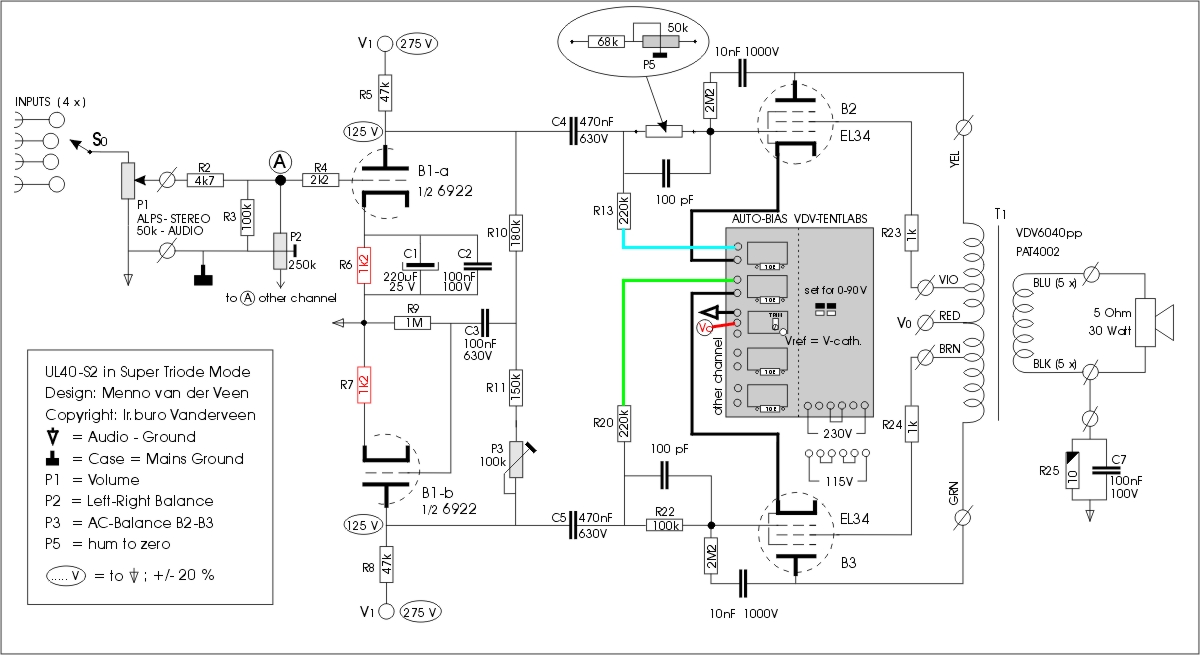The last years some minor changes were introduced into the UL40-S2. The power valves EL34 were replaced by the 6550 valves. The screen grid resistors R23,24 were changed into 1 kOhm to dampen any oscillation. Not so long ago, the superior Super Triode (ST) mode was introduced, which delivers full output power while being a real triode amplifier. Even more recently the auto-bias unit was introduced to ensure exactly equal quiescent currents. With all these improvements and changes, the amp functions much better. But in me there grew a certain doubt. Anytime you change something here, it might have negative influence on other spots of the amp. Therefore I decided to check the complete amp once again, to measure everything. And what happened? I found that the driver stage (B1) hardly was able to deliver enough AC voltage for the power valves. In the old situation with only EL34 valves, everything was fine. But the 6550 valve asks for more AC voltage on its control grid, while the ST-mode even asks for extra AC-drive. These changes caused the B1 tube to be at the edge of its capabilities. To improve the cathode resistors R6 and R7 should be removed (they were 680 Ohms) and replaced by resistors of 1k2. Under this condition the valve B1 gets much more headroom and easily can deliver the larger AC voltage. See the schematics for more information.
click on figure to enlarge
The voltages at the anodes of B1 now again are close to 125 V (in case you use the ECC88 or 6922). With the 6N1P valve the anode will be at around 185 V which is fine as well, because the 6N1p has somewhat different Ia-Vak-Vgk characteristics. What improvement do we get changing R6,7 into 1k2? Much more dynamics, one will easily notice that B1 is not limiting the capabilities of the UL40-S2, there is much more headroom.

